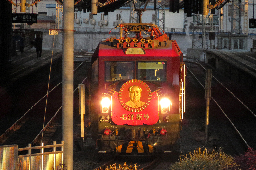The University of California at Berkeley had it's School of Criminology defunded by Ronald Reagan because there were too many Marxists in it. In modern parlance, Marxist criminologists are referred to as "Radical Criminologists". Some concepts that were put forth by these radical criminologists are as follows:
- Capitalism shapes social institutions, social identities, and social action. The mode of production comprising the means of production and the relations of production, facilitated by the ideology promulgated through social institutions, shapes the character of the institutions through which it operates; it encourages divisions of class, race, and gender and shapes identities and the activities of the individuals subject to it (Michalowski 1985).
- Capitalism creates class conflict and contradictions. Capitalist society forces humans into class conflict based on the inequalities of ownership and control of the means of production (Spitzer 1975; Quinney 1977). These classes are divided because the capitalist owners and employers want to maintain the existing power relations or improve them in their favor by increasing profits, whereas workers want to change the system and increase their share of the fruits of production by increasing wages. These desires produce two fundamental contradictions. The wages, profits, and consumption contradiction requires workers to have sufficient income to make consumption purchases and thereby increase economic growth. Too much growth, however, is undesirable, as profits and investment possibilities are undermined. The wages–labor supply contradiction requires that a surplus population of unemployed workers be maintained to keep labor costs down, but these people are not so impoverished that they create problems and costs for capitalism (Chambliss 1988).
- Crime is a response to capitalism and its contradictions. Crime is a rational response to the objective conditions of one’s social class (Chambliss 1975, 1988). Capitalism creates crime directly through generating and maintaining a surplus labor force of the unemployed and underemployed, or “underclass” (resulting from technological replacement), who are necessary for keeping wages low, but who also may commit crimes to survive (Spitzer 1975; Chambliss 1988). Capitalism creates problems indirectly through education, necessary for managing increased technology and for learning how to labor, but with the unintended consequence of raising consciousness (Spitzer 1975). Predatory crimes of theft, robbery, and burglary and personal crimes such as murder, assault, and rape are the result of the oppressive conditions of capitalism to which those exploited have to accommodate. Crimes such as sabotage and political violence are the result of resistance to and even rebellion against capitalist domination. Crimes of both accommodation and resistance may be more or less politically conscious acts (Quinney 1977; Michalowski 1985; I. Taylor, Walton, and Young 1973). Crimes among the dominant economic classes also result from capitalists’ attempting to resolve the contradiction of wages, profits, and consumption by cheating to get illegally what they cannot get legally in ways that harm other capitalists (Chambliss 1988).
- Capitalist law facilitates and conceals crimes of domination and repression. Capitalist law as part of its methods of domination inflicts harms on those subject to control, including violence and violations of human rights. As well as such “crimes of control,” capitalism facilitates “crimes of government,” including corruption and graft; “crimes of economic domination” such as corporate fraud, price-fixing, dangerous production methods and products, and toxic pollution, which are undertaken in response to its basic contradictions; and social harm or injury to human rights resulting from institutionalized racism and sexism, which are reflective of the hierarchy of domination in the capitalist system as a whole (Quinney 1977).
- Crime is functional to capitalism. Crime provides work for the surplus population and for others in the crime-control industry, mystifies the capitalist exploitation of workers (Chambliss 1975), and justifies the need for the very law that maintains that system of exploitation ( J. Young 1981).
- Capitalism shapes society’s response to crime by shaping law. The ruling economic class defines the content of criminal law in order to control the subordinated classes, which threaten or create problems for capitalism’s accumulation of wealth and its system of domination (Chambliss 1975; Spitzer 1975; Quinney 1977). These problems include threats to the capitalist system of ownership of the products of work (e.g., theft), threats to the production process (e.g., unemployment, vagrancy, drug use, mental illness), threats to the system of distribution and consumption (e.g., substance abuse, theft), threats to the system of reproduction of workers (e.g., truancy, homosexuality), and threats to the institutions promoting the dominant ideology (e.g., alternative schools, cooperatives). For the purpose of management, these threats fall into one of two problem populations: the relatively harmless “social junk,” which has to be carried by the system, and the relatively dangerous “social dynamite,” which must be controlled and undermined. (Spitzer 1975)
Marxist criminologists are split into two camps: Instrumental and Structural. Instrumental marxists see "a direct and crude relationship between the ruling economic classes and the government" and "the law and criminal justice system are coercive instruments used to control the lower classes. This control serves to maintain the existing social, political, and economic system. Members of the dominant capitalist ruling class make laws and devise a criminal justice system that promotes their own economic interest.", while Structural marxists see a "much more autonomous role for government, which acts on behalf of the long-term interests of capitalism rather than in the short-term interests of powerful corporations".

Go Bears! :og-hex-bear: